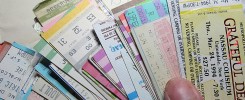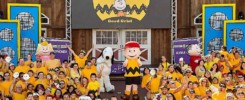Improving your bottom line by making a better experience for your guests
This post is based on Episode 26 of our Marketing Your Attraction podcast.
Adding value is the marketer’s way of saying, ‘How do we get more money out of our guests? Let’s do it in a way that makes them feel good about giving us that money.’ In mature markets, your marketing strategy switches from gaining attendance to gaining value per guest.
What opportunities exist to make the experience better for your superfans? Your superfans want more of an experience, so how do you craft that for them?
The Mature Market
Regional theme parks have pursued increasing the value per guest in the last few years. The reason they’ve had to charge more is because the US is a mature market. Few new theme parks are opening. In a good year, your attendance will go up maybe 5% to 10% (excluding Disney and Universal). In North America, most theme parks are happy if their attendance grows from 1% to 5%. The goal in a mature market becomes: increase both attendance and value per guest.
Increasing Value Per Guest
There are a variety of ways that upcharging happens in the industry:
- Dining plans
- Front of the line
- Max Pass
- Attraction owned hotels
- Premium parking
- Photo passes
The key to success with this is make the guest feel like they’re getting more value.
Look at your survey results to spot a trend across the board among guests who are buying front-of-the-line access or a dining plan. Do those guests feel they’re getting more value from the attraction? If you’re doing upcharging and adding value correctly, upcharging can work well for you and enhance your guest’s perceived value.
A Dining Plan Example
In its recent email blast, Six Flags was talking about how they know their food is expensive, so they suggested that guests get a dining plan. Their marketing stated, “It’s almost as affordable as eating at home. If you eat at Six Flags at least three or four times in a year, it will be worth it.” Guests feel the dining plan value, even though they aren’t eating, five, ten, fifteen times a year at Six Flags. Six Flags wouldn’t be making money off dining plans if guests redeemed them frequently. But the guest perceives value. Up front, they can imagine they’ll eat there three or four times a year.
The Value Must Exist
Front of the line is the first place a smaller attraction would add value (unless you can handle food and beverage or premium parking). Front of the line is where most attractions start. Ensure that if a guest is paying $10, $20, or $100 for this front-of-the-line pass, they’re getting more value than the guest that’s not paying it. This is where added value and upcharging go wrong—when a guest spends more than the normal ticket cost and is having a worse experience or at least not a better experience than a guest with a normal-price ticket.
Design your upcharges in a way that ensures the guest perceives that extra value. That’s the magic—when you’re getting more money from a guest and they’re happier. Front-of-the-line guests, even though they’re spending more, if they’re waiting less time on a busy day, will have a better experience. Bonus, those guests are much more likely to return than a normal guest! Conversely, make sure your normal guest doesn’t feel slighted because for not paying the upcharge. It becomes a real balancing act. You need to make more money, but you don’t want a negative impact on that normal guest experience either.
Do Guests Even Want It?
While working in-the-weeds on upcharging programs, it’s easy to get carried away. Front of the line, dining, water, soon you have an entire upcharge menu! You’ve made many iterations, but do the guests care?
Iteration is not always the right way to approach an added-value experience. You’re in the wrong mindset, because you’re coming at it from trying to make tick marks going up. Instead, ask: What is the perfect experience at your attraction?
The Perfect Guest Experience
There’s a story I heard on a podcast that blew my mind in explaining this concept. The podcast is Masters of Scale, which is an amazing podcast from Brian Chesky, the co-founder and CEO of Airbnb. They called the episode “Handcrafted.” Brian contacted a traveler visiting San Francisco for the first time from overseas. First Airbnb watched him have the vacation his way—all the touristy stuff. Next they invited the same traveler back, except Airbnb planned the perfect experience for him in San Francisco. Transportation, dining, and social experiences all to create the perfect experience. Airbnb’s vacation was the best trip he’d ever had. Having crafted a perfect experience Airbnb sat down to map out what a ten-star experience looked like, and a three-star, and a one-star.
When we think about a theme park, what’s a three-star experience for the guest? You go, you wait in line for a ticket, and you have an average day. That’s a three-star. A three is everything operating (this is most of the park industry). Maybe you’re visiting Disneyworld for the first time and don’t realize that the fast passes are booked 30 to 60 days in advance, so you and your daughter don’t get to go on the Frozen ride because the wait time is three hours. That’s a three-star experience, because it was middle-of-the-road.
What does a five-star experience look like? Is it a five-star experience at Disneyland when you get to do the three mountains, have a character greeting, never wait over 30 minutes for a ride, and have a meal worth the price? Then what’s a ten-star or eleven-star? What do you need to do to get a ten- or eleven-star experience? Don’t constrain your thinking by what is possible.
Decouple your brain from upcharges and think in experiences. What would a perfect day look like to your guests? What are all the factors that must align to make this happen? There are a lot of things that just aren’t possible. Most of the stuff isn’t possible even for a five-star, and you’re doubling it to ten-star. To be clear, this is a five-star on a one-to-five-star rating; then you double that to ten-star—which means blowing your guest’s mind out of the water by adding things you didn’t even think were possible.
Go to a place the guest doesn’t even know they need, but once you give them the option, it blows their mind. Is it possible to figure out where your guest was staying, have a limo pick them up, and have them bypass the line so they go right into the park? What about a guided tour with the opportunity to be a scare actor? What level star would that be, and would that be possible? Is that value they’d enjoy?
To summarize, when you’re looking at value-added opportunities, don’t come at it starting with, ‘This is what we offer, so what thing could we add onto this for a few dollars that would make a better value? We could give them lunch. Lunch costs this much, but if they paid for it in the park, it would be this. So, if we write that into the ticket, we give them a discount for the added value and split the costs with them. So, we make a little less margin, but they feel they got added value.’ That’s not a good way to do added value, because you don’t know if it makes their experience better. You’re not creating a superior level of experience.
Give Your Guests a Ten Out of Five Stars Experience
Imagine what a five-star day looks like for your guests. Look at what people say made it a five-star experience. Then think about what you would need to make a ten-star. This gets your brain out of the construct of what a regular experience at a theme park is and starts you thinking about what it could be.
The biggest takeaway is the approach you take when you’re considering this.
If you want to dive a little bit deeper, or a lot deeper into it, click on the links in this article. If you have ideas for topics you’d like us to discuss, visit MarketingYourAttraction.com, sign up to be on our email list, get our contact information, and let us know what you’d like us to cover in future episodes.
Also, don’t forget to sign up for your free subscription to Seasonal Entertainment Source.



